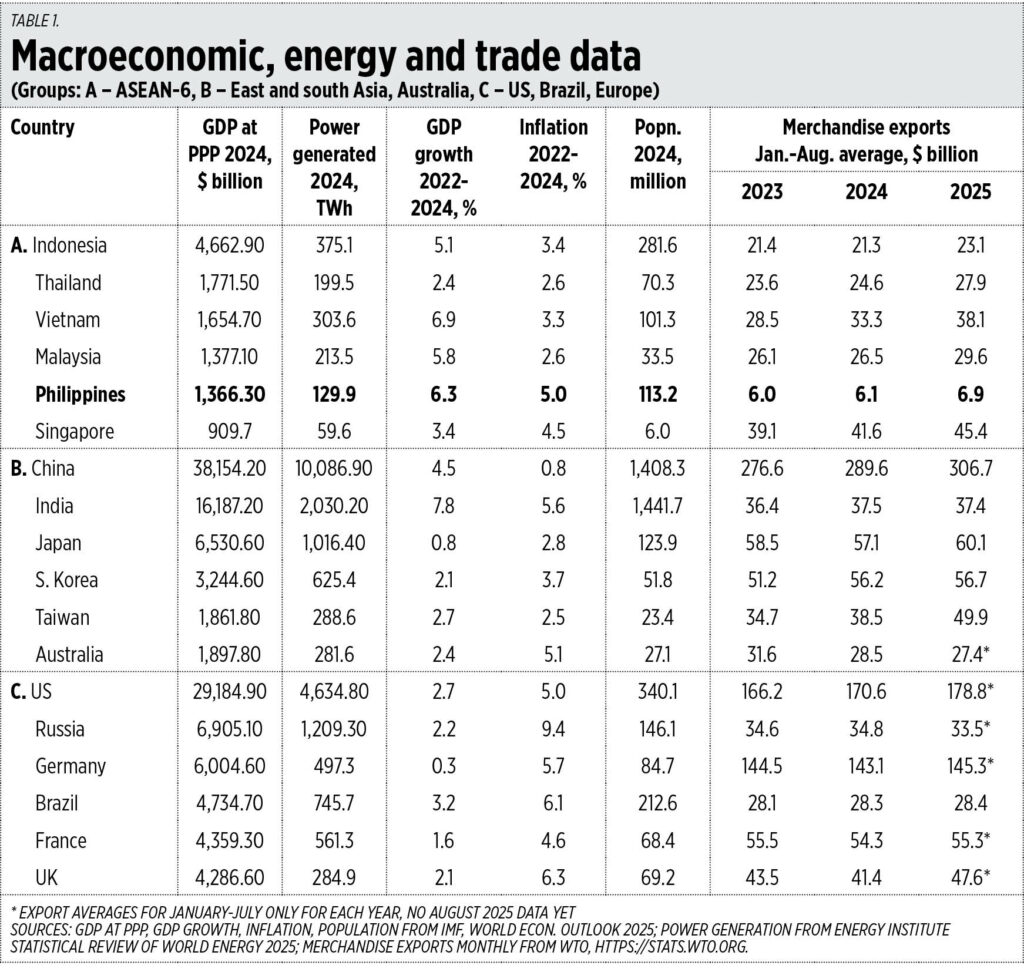bThe IG events were taking place at the ASEAN Summit in Kuala Lumpur, which began on October 26 and will end today, 28th47 views last sundayth ASEAN Summit and President Ferdinand R. Marcos, Jr. participated. Then there was the ASEAN-US summit with US President Donald Trump and the ASEAN-Japan summit with Japan's new Prime Minister Sanae Takachi.
28th ASEAN Plus Three (with China, Japan and South Korea) summit held yesterday, then the 20thth East Asia Summit, ASEAN plus India, Australia, New Zealand, US and Russia. Brazil and South Africa participated as observers. Today, the ceremony of handing over the ASEAN Chairmanship from Malaysia to the Philippines will begin on January 1, 2026.
In honor of the ASEAN Summit, I collected some basic economic data about ASEAN's major economies – six of the 11 members – then their major trading partners in the region, the US and Europe.
The size of GDP at purchasing power parity (PPP) prices, at the top fiThese include China, America, India, Russia and Japan. When it comes to electricity production in terawatt hours (TWh), the same countries are on top fiThey.
Looking at average GDP growth for 2022-2024, the top three fastest growing countries were India, Vietnam and the Philippines. The slowest were Germany, Japan and France. When it comes to inflation rates, Russia, Britain and Brazil have the highest; The least are China, Taiwan, Thailand and Malaysia.
In merchandise exports, despite Trump's tariff increases beginning in April, East Asia as a whole has actually experienced export growth; India's exports were stagnant, and Australia's exports were declining, as were those of the US and Europe (See Table 1,

We should focus on industrialization, investment, trade expansion and economic prosperity and not on instigating war. ASEAN is a good place for this long-term goal.
our cash position
Last week, the Bureau of the Treasury (BTR) released the cash operations report and financial position for September this year. Here I compare the January-September totals of the last four years.
The budget deficit could exceed the projected P1.6 trillion by the end of 2025 as it was already P1.1 trillion as of September (See Table 2,

The allocation to local government units (LGUs) through the National Tax Allocation (NTA) is increasing from P871.4 billion in 2024, to a programmed P1.03 trillion in 2025, and P1.19 trillion in 2026. The Department of Finance (DOF) targets that LGUs will finance services in health, education, agriculture and environment, roads and infrastructure, technology, and security and social protection. (Heart).
DOF Secretary and Landbank President Ralph G. RECTO also provided cash assistance to the earthquake-damaged provinces, especially of Cebu and Davao Oriental. Additionally, he unveiled higher tax-free benefits for Filipino workers nationwide, including a higher tax-free monetized unused vacation credit of 10 to 12 days for private employees. Nice move there, Secretary Recto.
Yesterday I attended the 2025 Fiscal Policy Conclave organized by the Department of Budget and Management (DBM) held at UP College of Law. Plenary speakers for the morning included Professor Emeritus Alex Brillantes of the National College of Public Administration and Governance (NCPAG) of the University of the Philippines (UP), Professor Emeritus Winnie Monsod of the UP School of Economics, Professor Emeritus Jess Estanislao of the University of Asia and the Pacific, and Jose Siquia of the Asian Development Bank. The plenary discussion was moderated by DBM Undersecretary Margaux Salcedo. The keynote address before lunch was given by DBM Secretary Amena F. Pangandaman gave.
Speakers at the afternoon panel included DOF Undersecretary Renato Resid, Jr., Department of Economy, Planning and Development Undersecretary Joseph “Docoy” Capuno, academics from Ateneo, De La Salle, UP NCPAG, Bangko Sentral ng Pilipinas, and other government agencies such as the Department of Congressional Policy and Budget Research.
From the abstract of Resid, Ortillon and Bonico's paper “Selective Applications of Data Science in Public Finance: The Case of the Philippines”, they focused on two important DoF operations – forecasting the flow of public revenues (including taxes and customs duties), and explaining local tax effort ratios across the country.
From the abstract of the paper “Catching Them at First Light: Predictors of Project Restructuring in Investment Coordination Committees” written by Capuno, Cambell and Gonzalvo, they wanted to identify through regression methods those projects that are likely to be delayed and have higher costs due to restructuring.
Such public forums are important, helping to engage the public (especially economics and public finance researchers) to find ways to control the growing public debt and rising interest payments which increases pressure to avoid tax cuts if not future tax hikes.
Bienvenido S. Opalas, Jr. Bienvenido S. Opalas, Jr. is president of Research Consultancy Services and Minimal Government Thinkers. He is an international fellow of the Tholos Foundation.
minimum government@gmail.com










